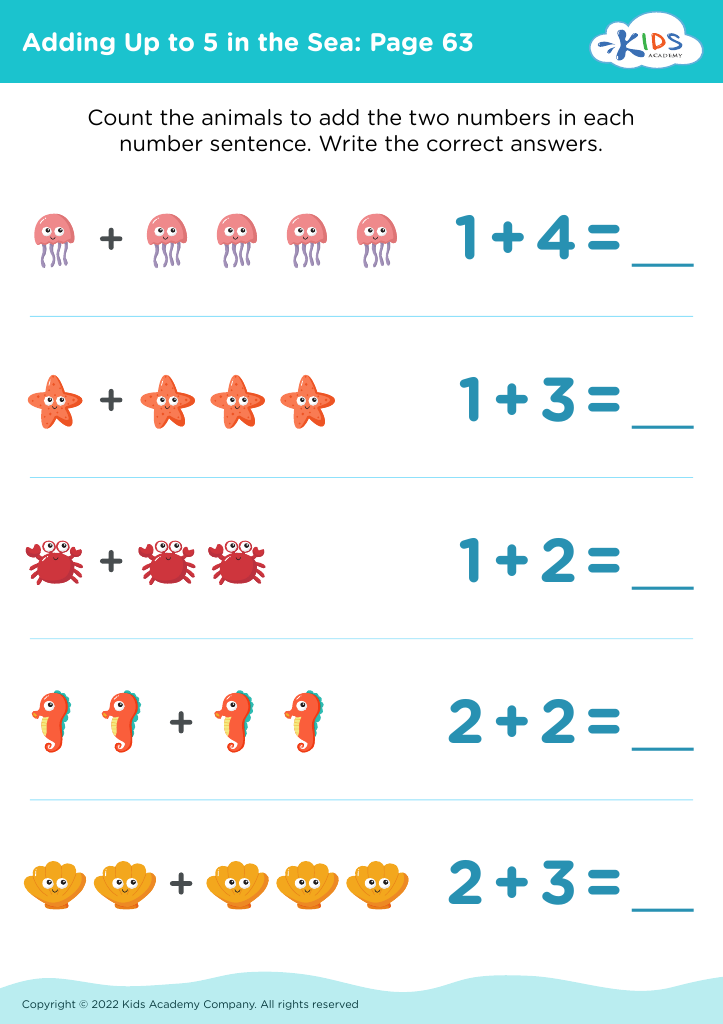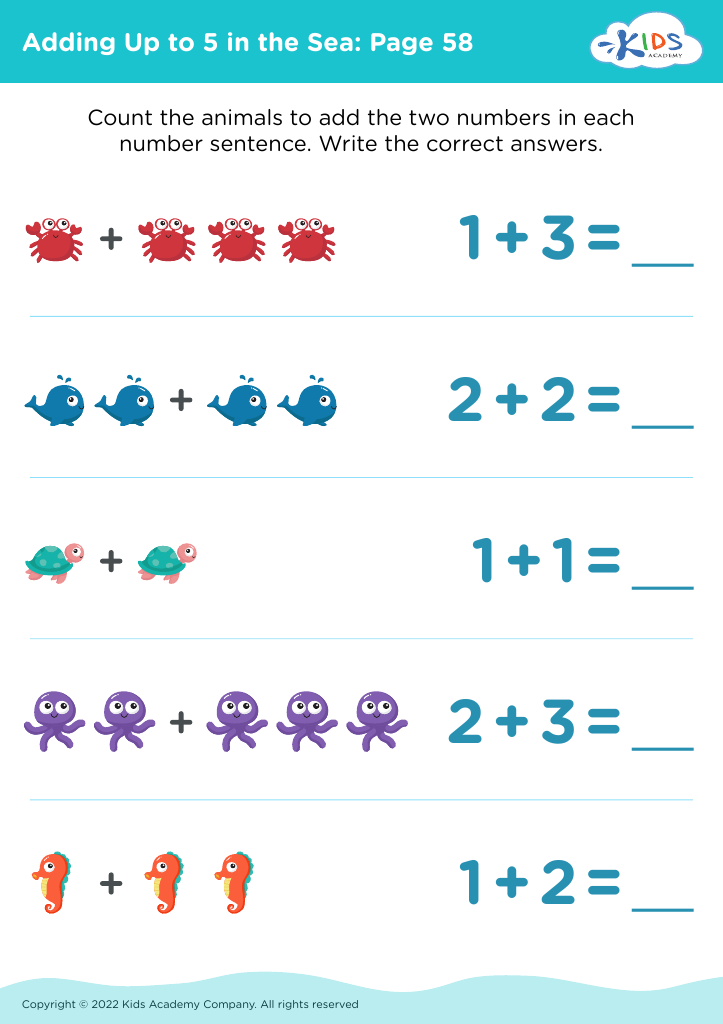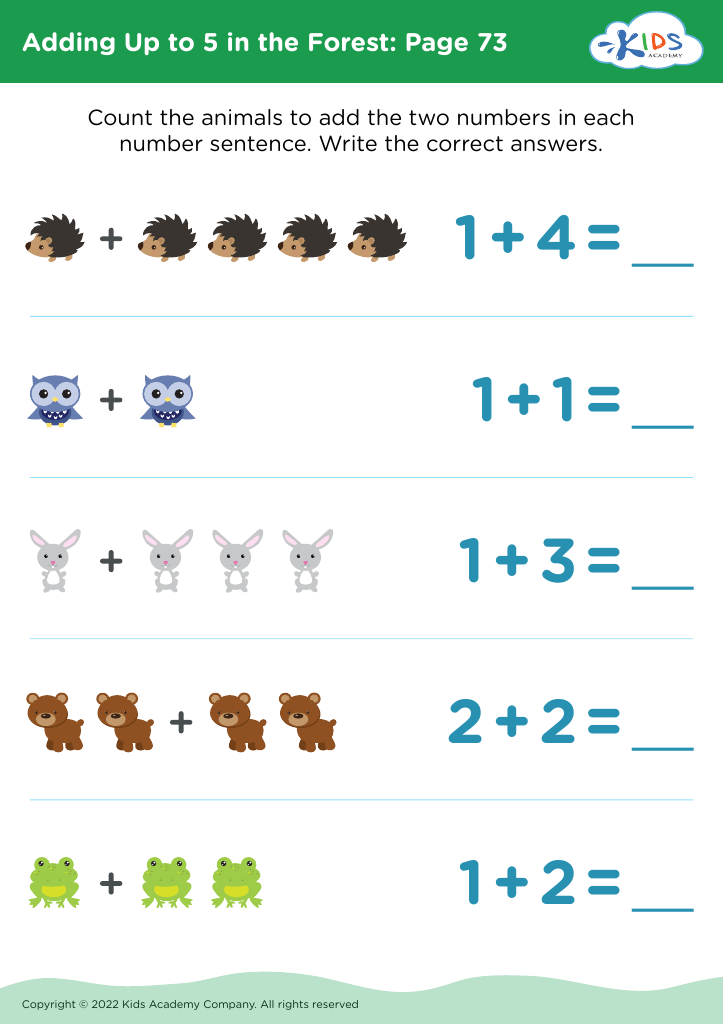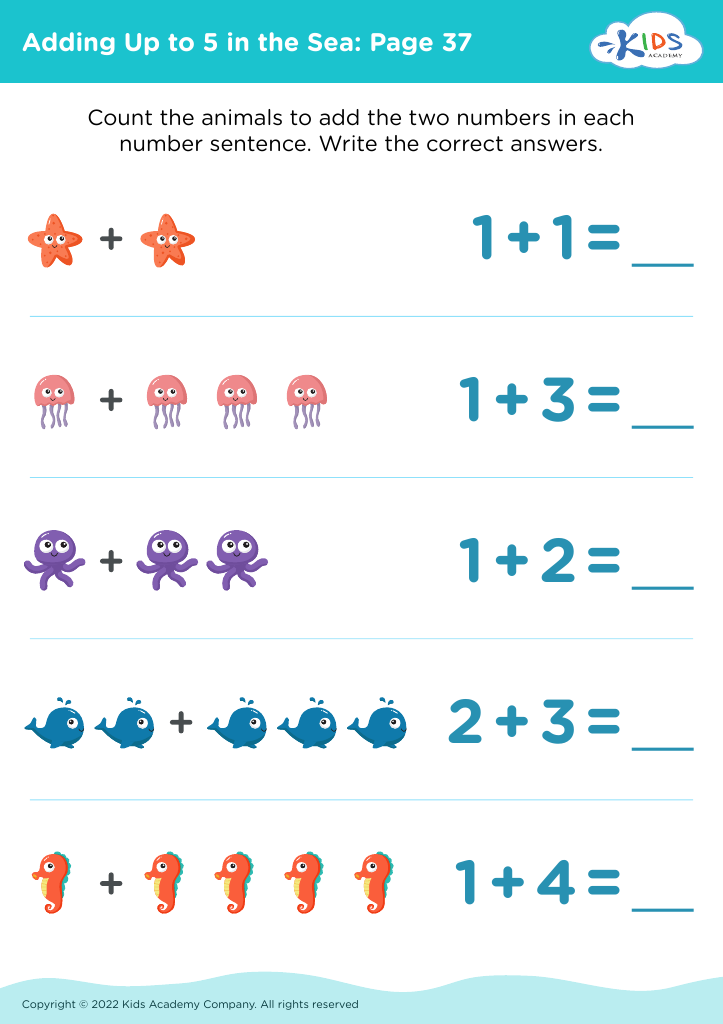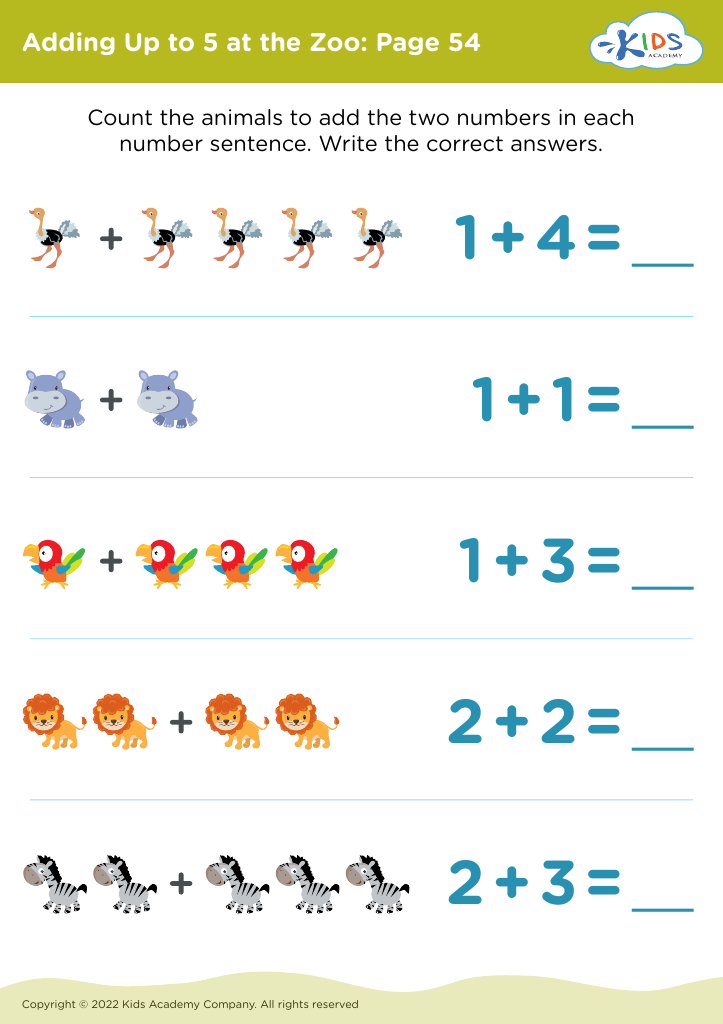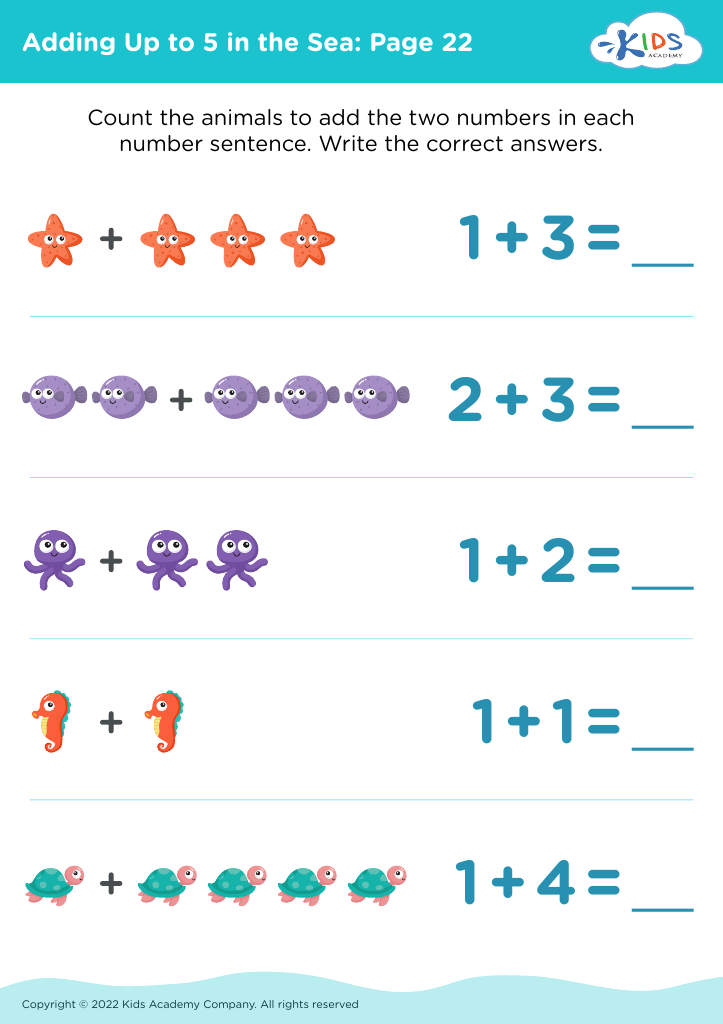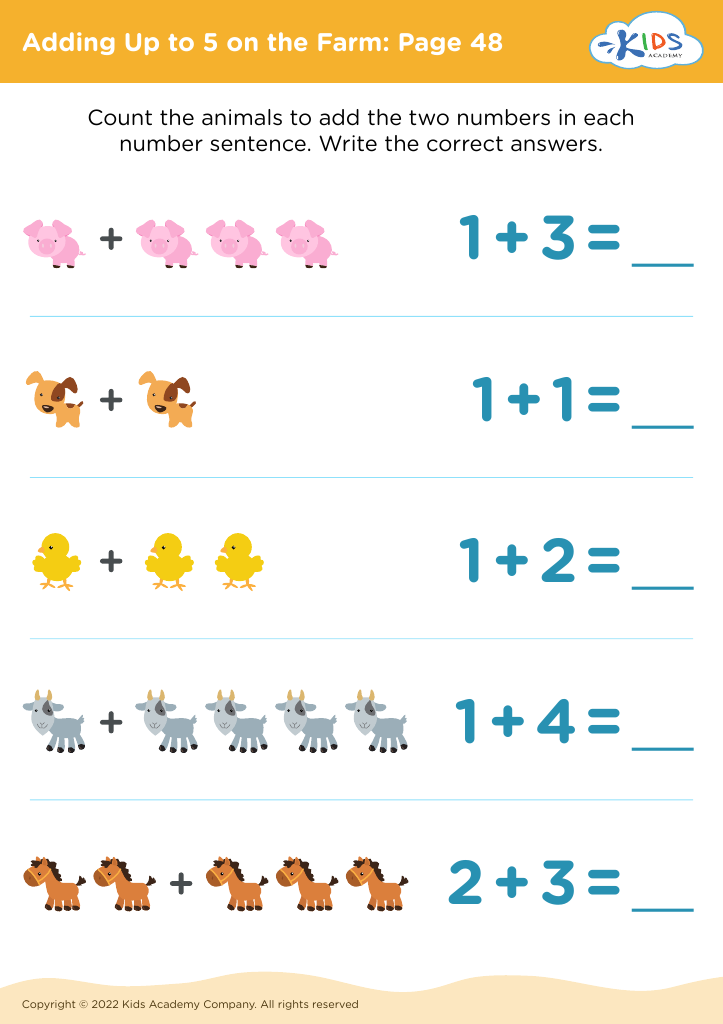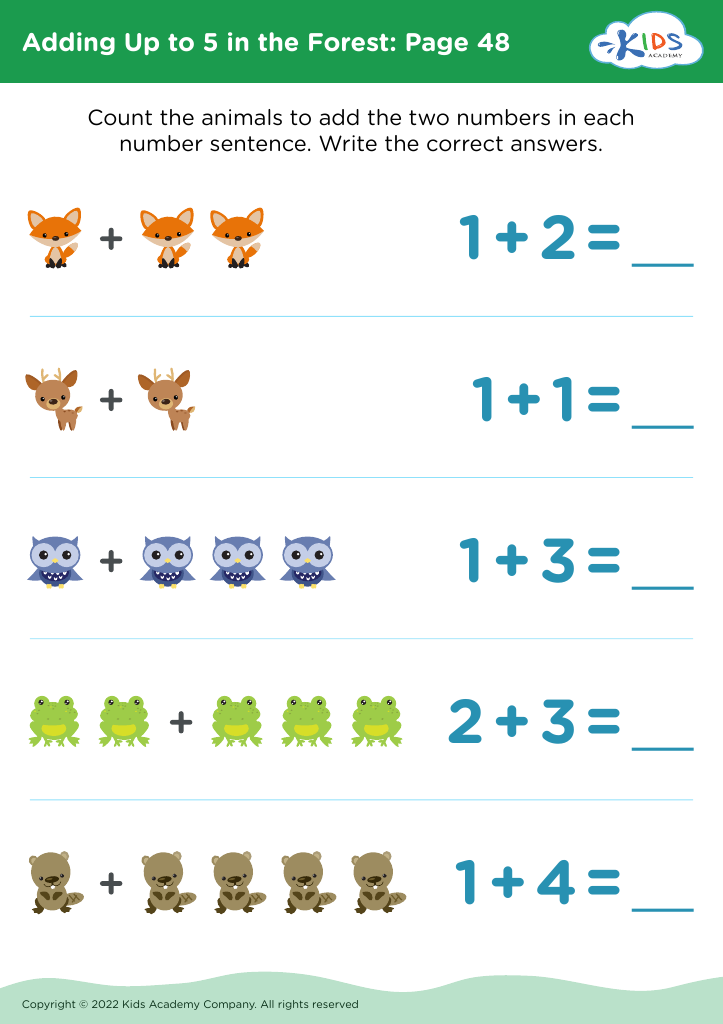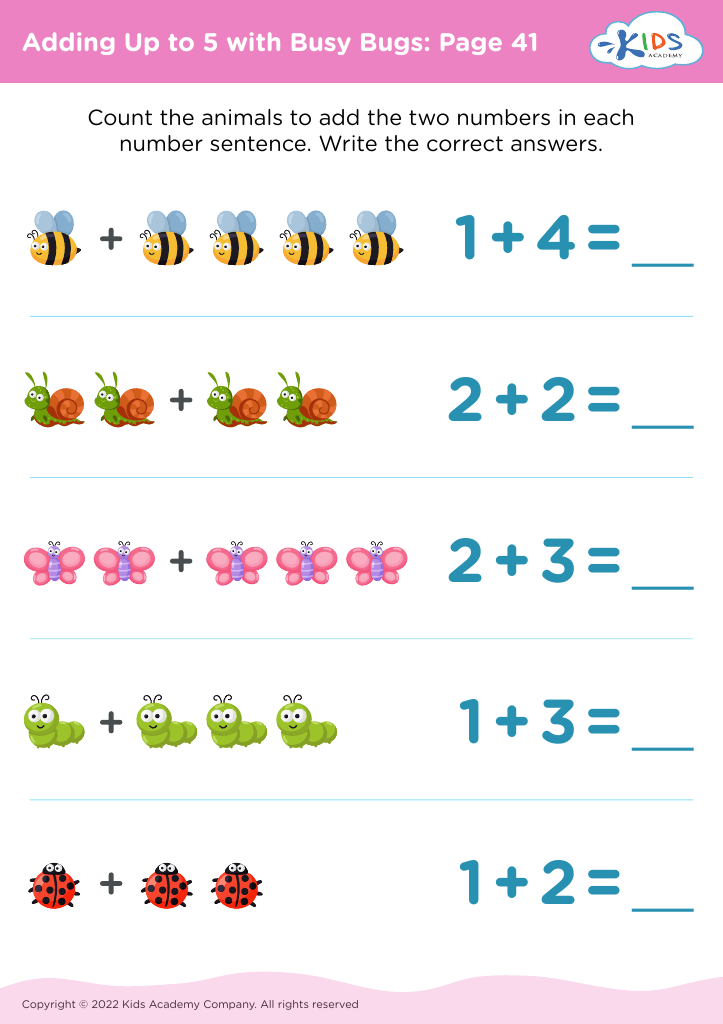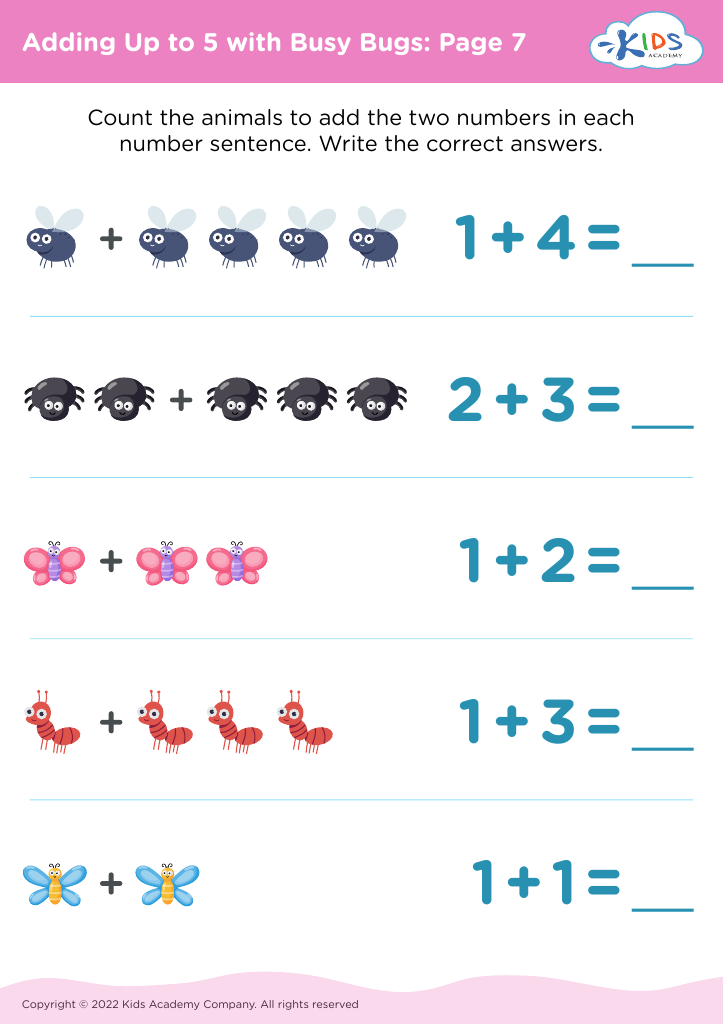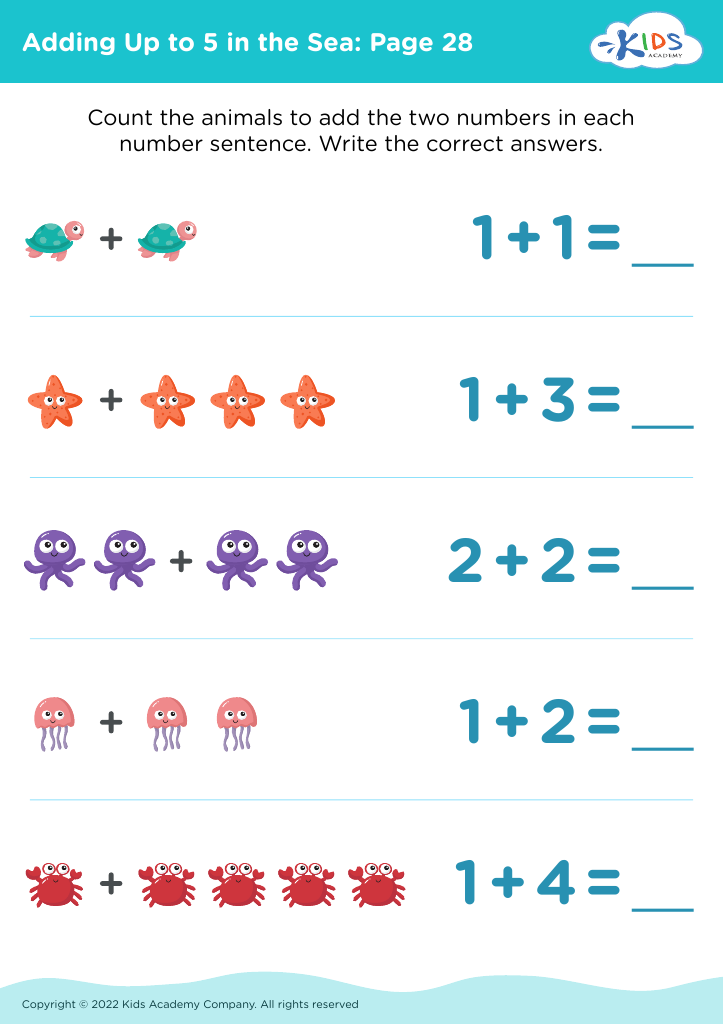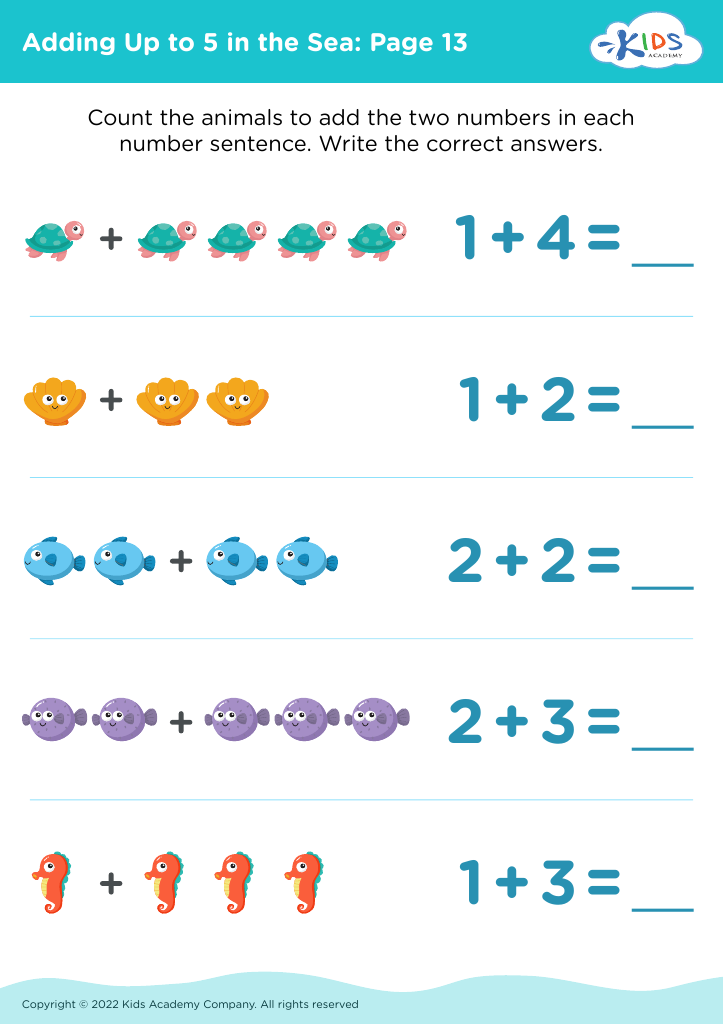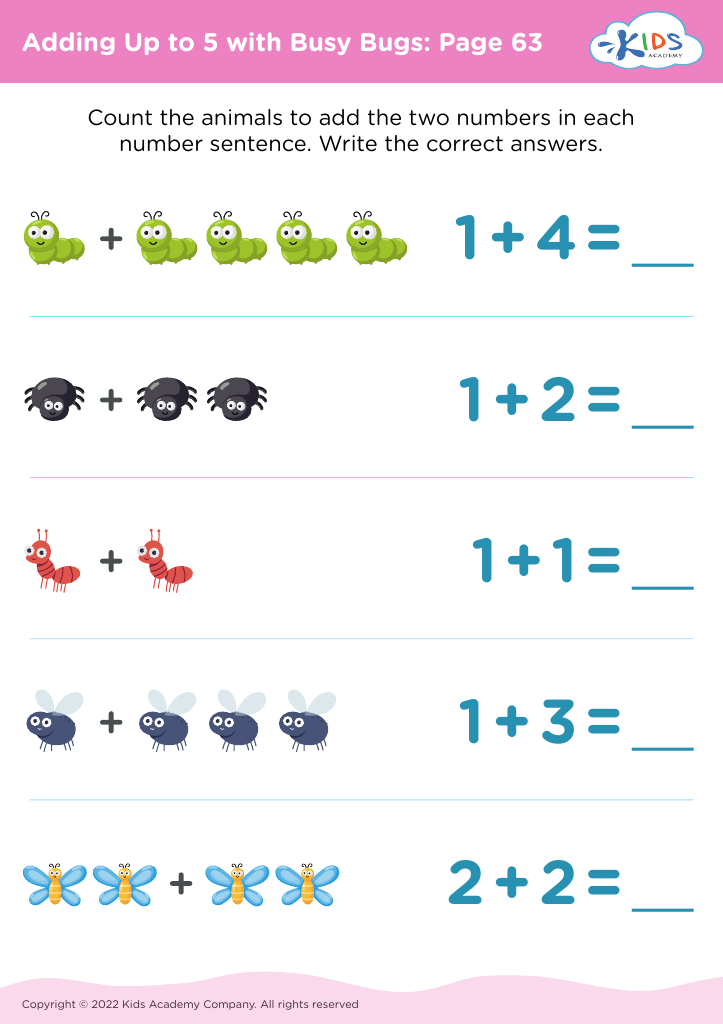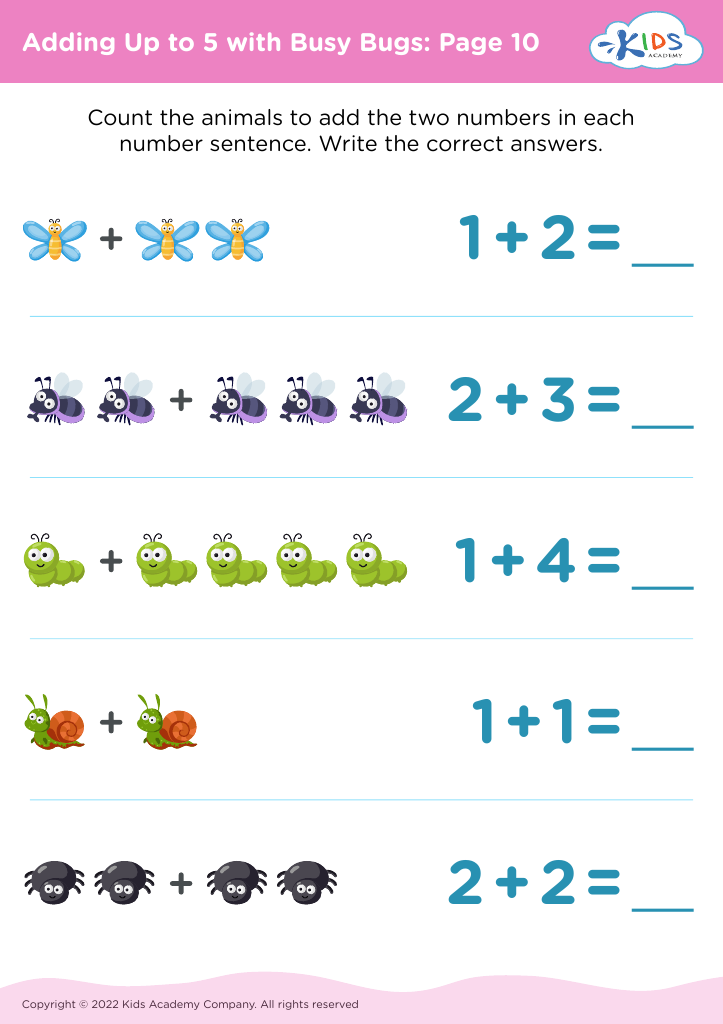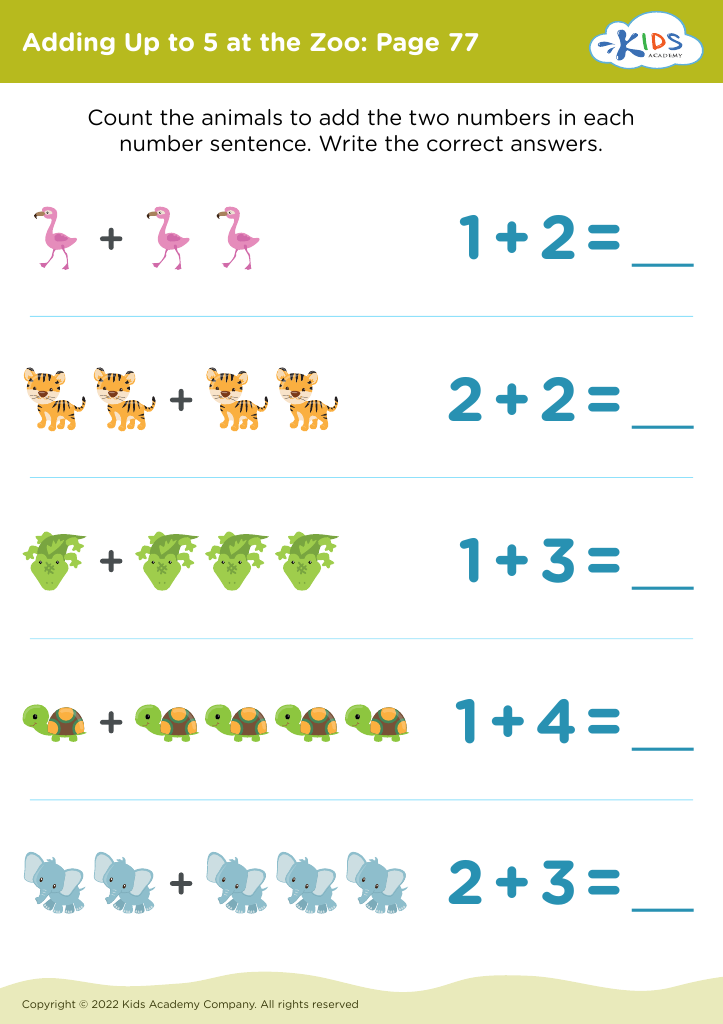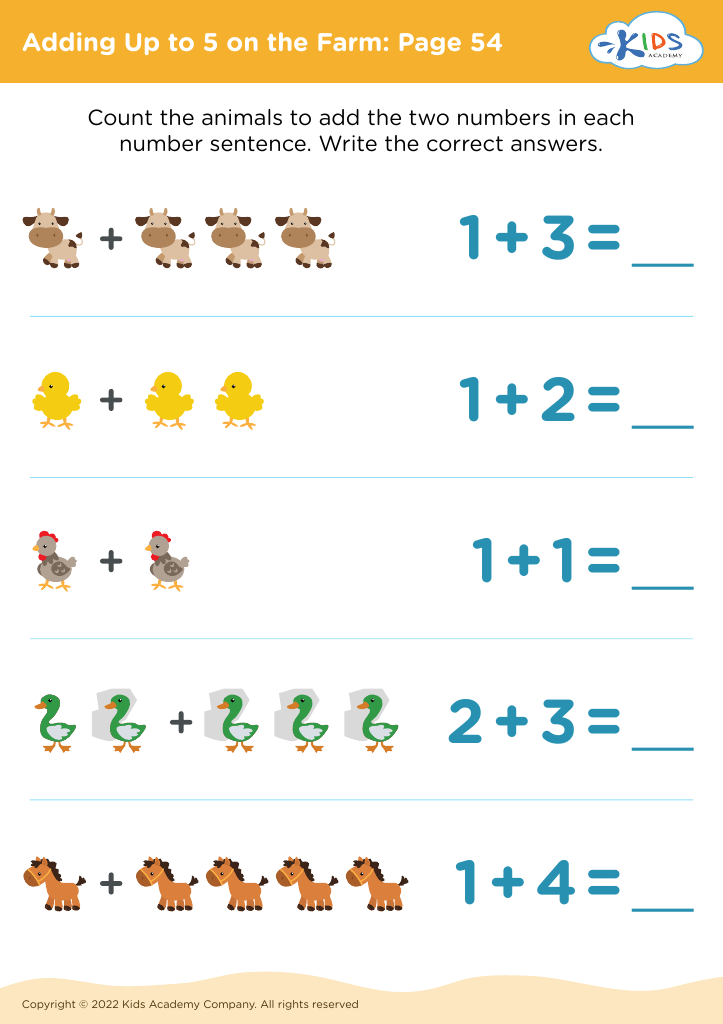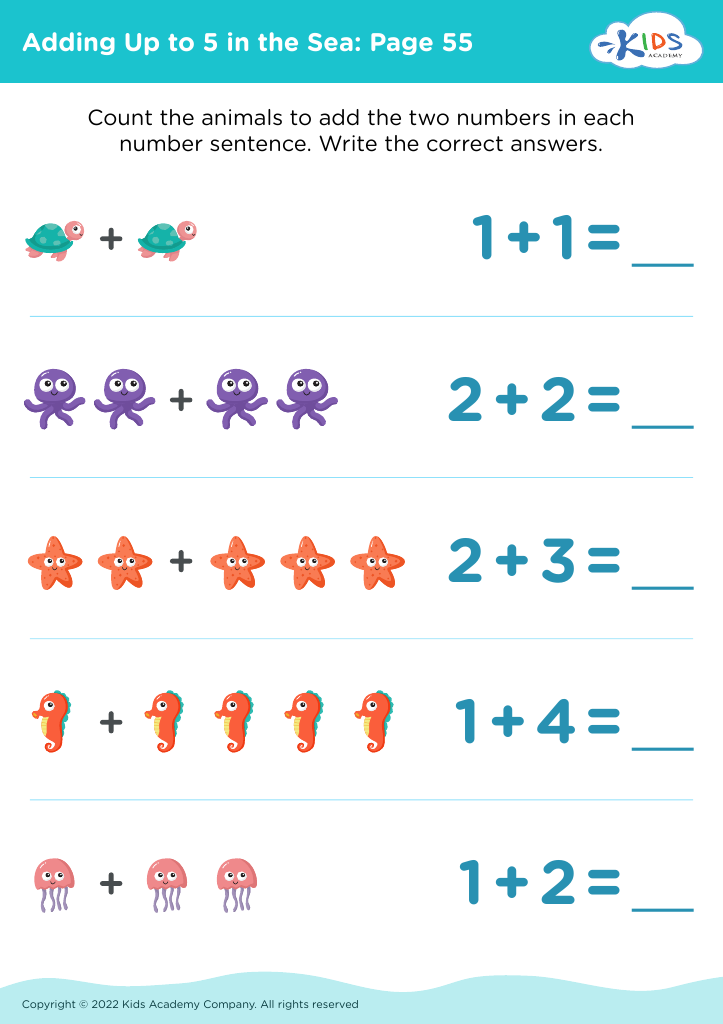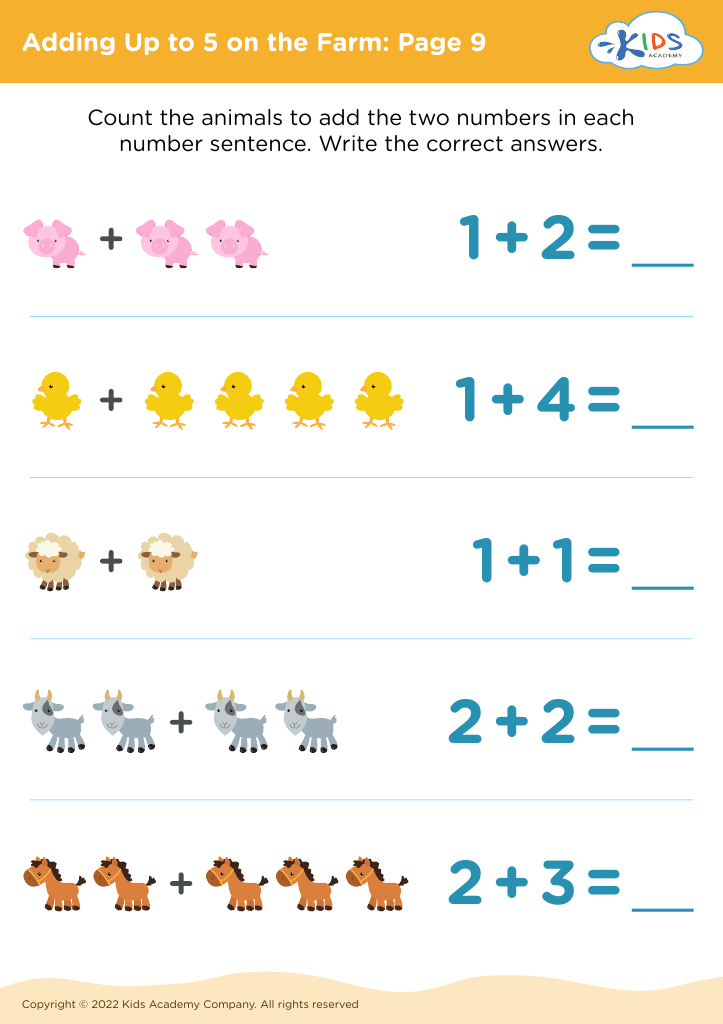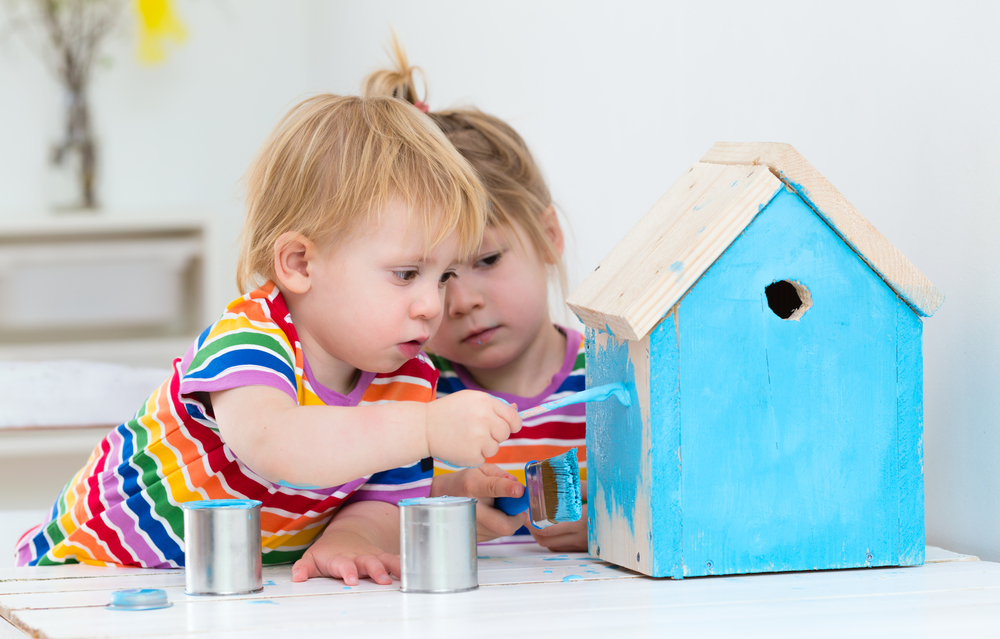Counting practice Math Worksheets for Ages 4-6
297 filtered results
-
From - To
Introduce your little learners to the joy of numbers with our "Counting Practice Math Worksheets for Ages 4-6"! Perfectly tailored for preschoolers and early kindergarteners, these engaging worksheets enhance essential counting skills through playful activities and colorful illustrations. Children will love interacting with number sequences, counting objects, and reinforcing their mathematical foundation. Designed to align with early learning standards, these printable worksheets make learning both educational and fun. Ideal for parents and teachers aiming to build a strong number sense, our worksheets ensure a delightful and effective counting journey for your young mathematicians!
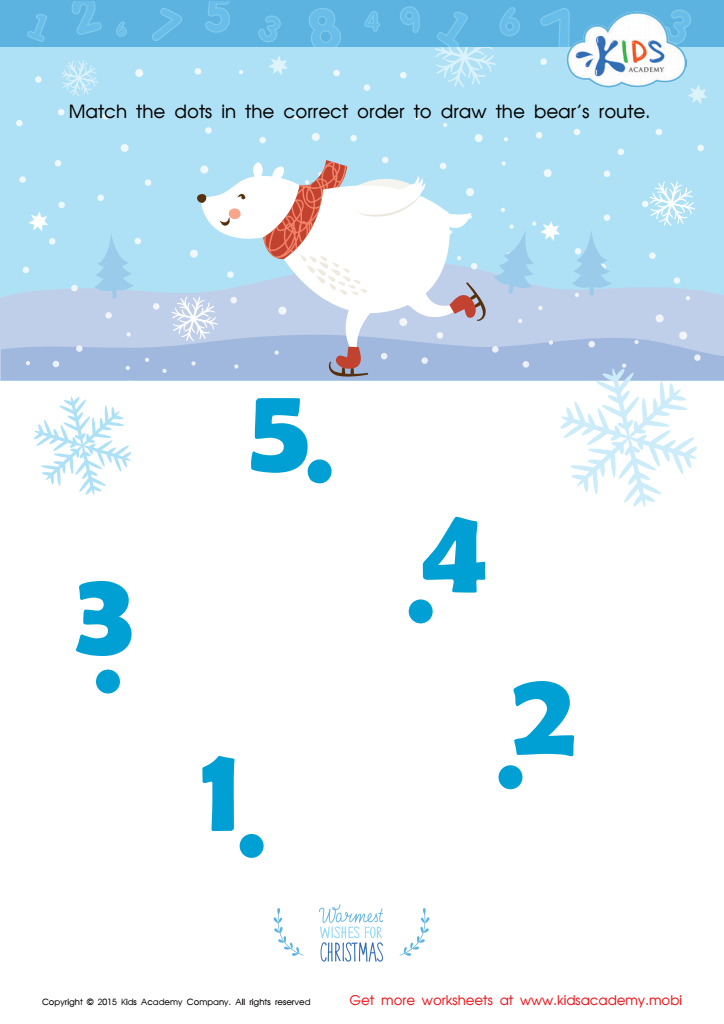

Drawing the Bear's Route by Number Worksheet
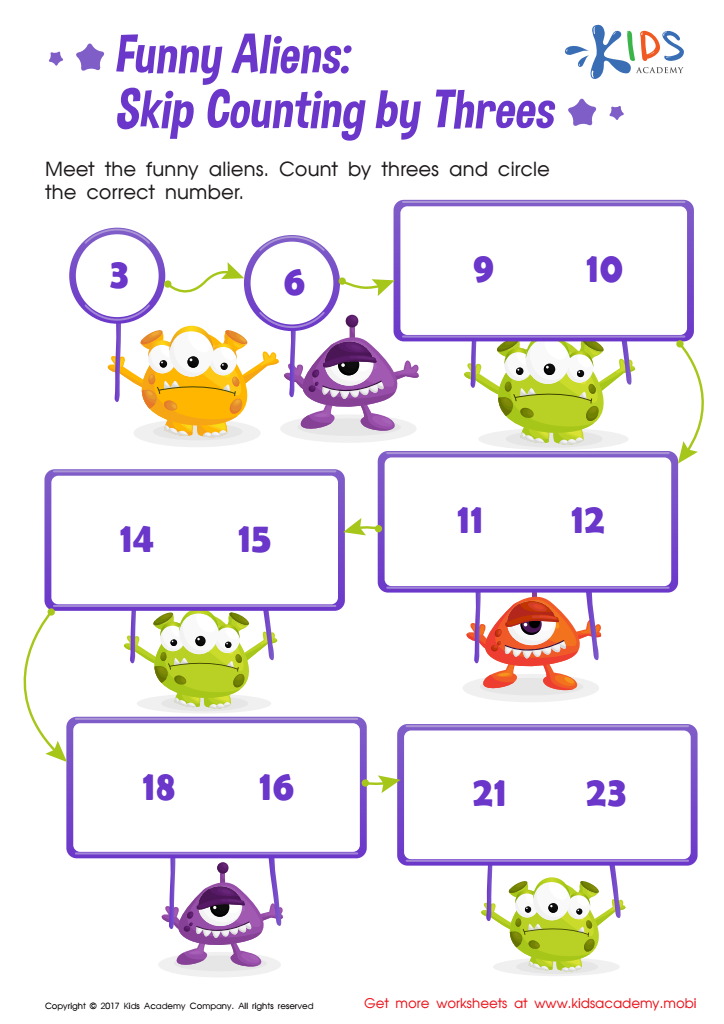

Skip Counting by 3s: Funny Aliens Printable
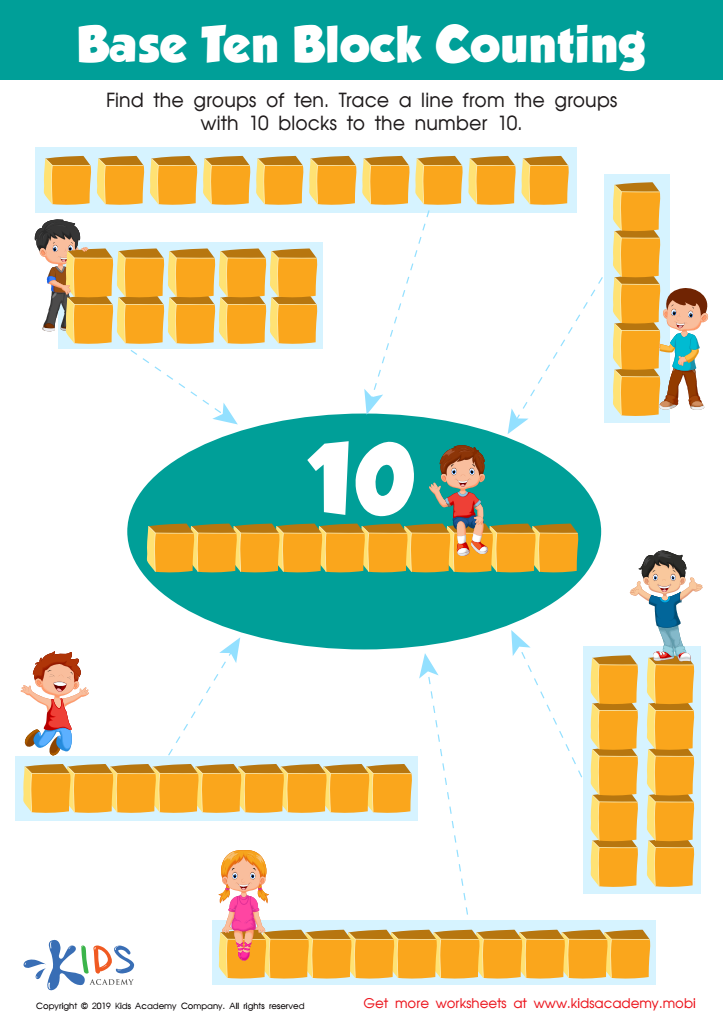

Base Ten Block Counting Worksheet
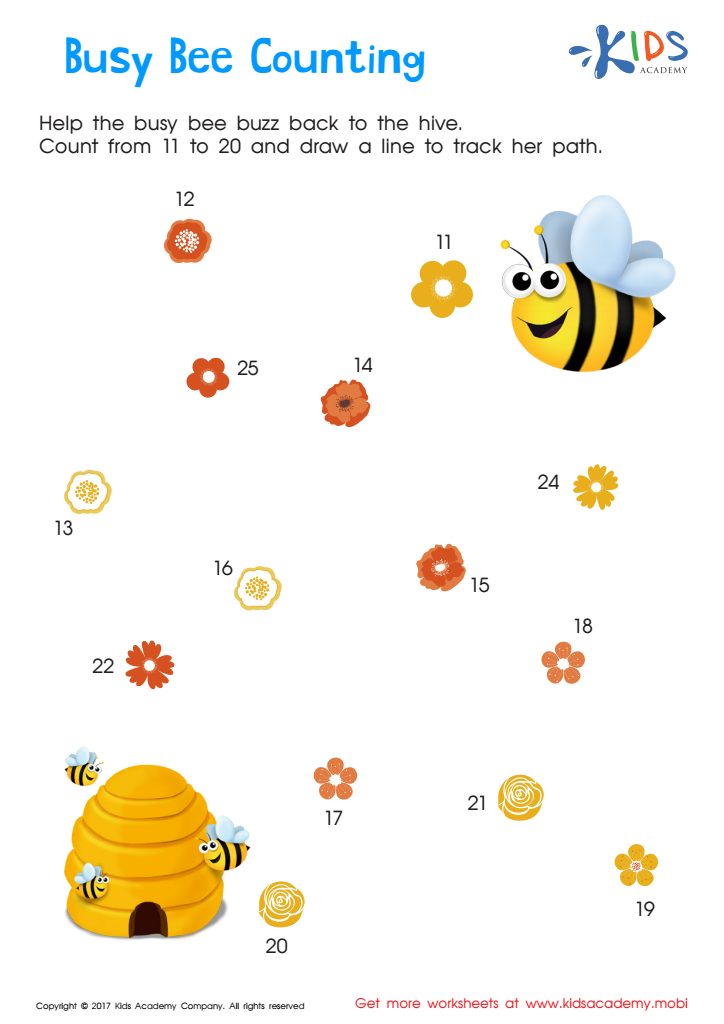

Ordering 11–20: Busy Bee Counting Worksheet
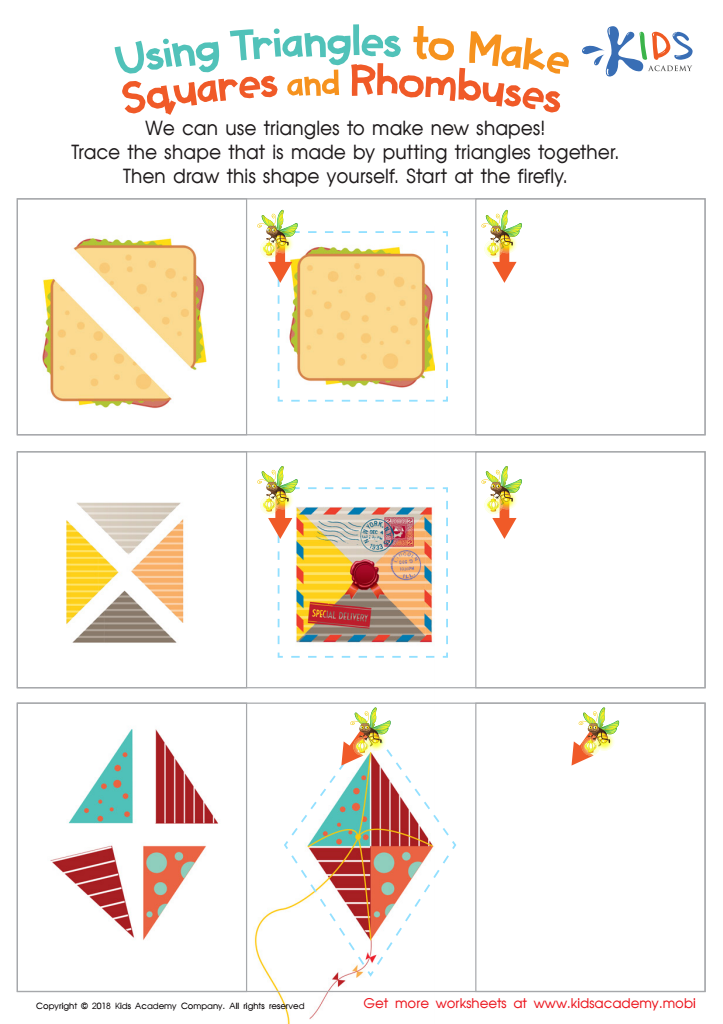

Using Triangles to Make Squares and Rhombuses Worksheet
Counting practice for children aged 4-6 is essential for laying the foundation of strong mathematical understanding, which can significantly affect their future academic success. During these formative years, children's brains are highly receptive to new information, making it an ideal time to introduce basic math concepts. Counting helps develop number sense, which is the ability to understand and work with numbers. It forms the cornerstone for more complex math skills like addition, subtraction, and even multiplication.
Moreover, counting practice nurtures concentration and memory. Young children learn to focus, follow sequences, and remember numbers, which enhances their cognitive development. These skills are not only crucial for math but also for overall academic performance, including literacy and problem-solving.
Additionally, early counting practice helps children understand the real-world applications of math. Recognizing patterns, telling time, and even day-to-day activities like sharing toys or snacks involve basic counting. It boosts children’s confidence as they frequently encounter situations where these skills are applicable.
Parents and teachers should care about counting practice because it equips children with essential tools for lifelong learning. An early start in math sets a precedent for a positive attitude towards the subject, potentially leading to greater competence and interest in STEM (Science, Technology, Engineering, and Mathematics) fields in the future.
 Assign to My Students
Assign to My Students
